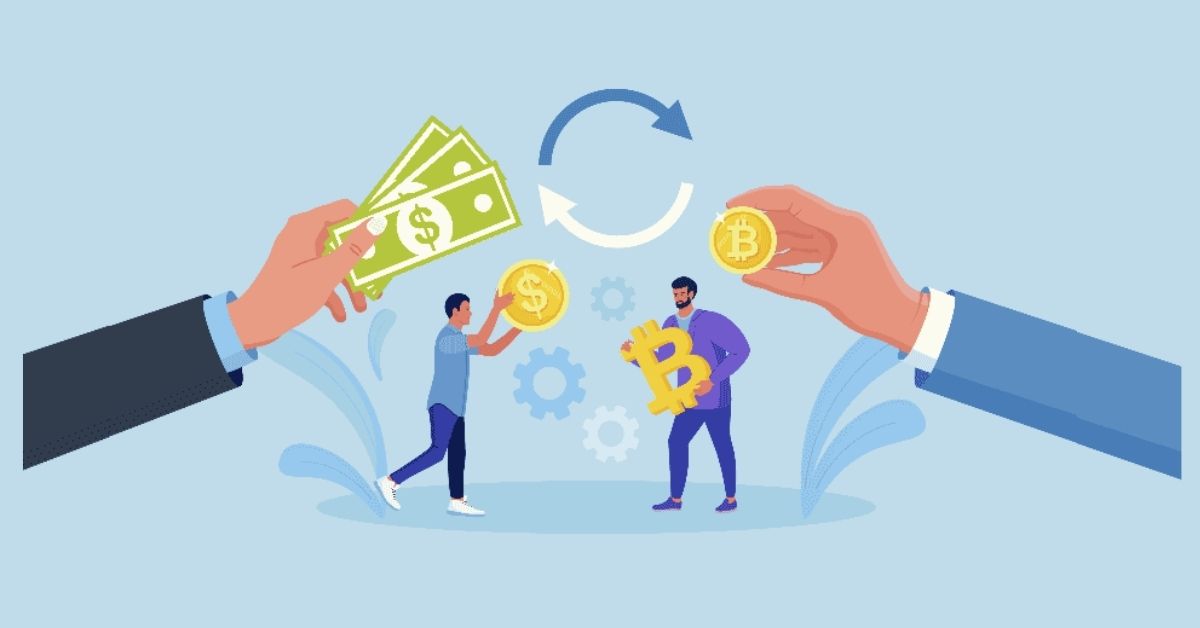1. What is Token Swapping?
.jpg)
Token swapping, also known as token exchange, is the process of exchanging one cryptocurrency for another. It allows investors to diversify their portfolios, rebalance their holdings, and capitalize on market opportunities. Think of it as trading one type of digital asset for another, similar to exchanging one currency for another.
For instance, if you hold 100 tokens of cryptocurrency A and wish to acquire cryptocurrency B, you can simply swap them directly on a decentralized exchange (DEX). This eliminates the need for multiple transactions or going through a centralized exchange.
2. Benefits and risks of Swap tokens

Token swapping offers numerous advantages for cryptocurrency investors, but it also comes with inherent risks. Understanding both sides of the equation is essential for making informed decisions.
2.1. Benefits of Token Swapping
- Convenience: Swapping allows users to quickly and easily exchange one cryptocurrency for another, often with just a few clicks.
- Access to a Wider Range of Assets: Token swaps enable users to trade a broader spectrum of cryptocurrencies, beyond those listed as direct trading pairs on centralized exchanges.
- Cost-Efficiency: By eliminating the need for multiple transactions, swapping can reduce overall transaction fees.
- Flexibility: Swapping provides investors with the flexibility to adjust their portfolios in real-time to take advantage of market opportunities.
- Smart Contract Risks: When swapping tokens on decentralized exchanges, there is a risk of interacting with faulty or malicious smart contracts.
2.2. Risks of Swap tokens
- Security risks: Utilizing token swap services can pose significant security and data protection risks, especially when trading on platforms that are unregulated or lack adequate security measures.
- Asset loss risks: Without implementing proper security practices, users risk losing their cryptocurrency during the token swap process. This can occur due to engaging with unreliable platforms or falling victim to scams.
- Price and liquidity risks: In some cases, token swaps may face risks related to price instability and liquidity, particularly with less popular or highly volatile cryptocurrencies.
In conclusion, token swapping is a powerful tool for cryptocurrency investors, but it's essential to approach it with caution. By understanding the benefits and risks, and taking appropriate precautions, investors can safely and efficiently manage their portfolios.
3. When Do Token Swaps Occur?

Token swaps are often triggered by significant changes or developments within a cryptocurrency project. Here are some common scenarios that necessitate token swaps:
- Protocol Upgrades: When a project decides to migrate to a new blockchain or update its underlying protocol, a token swap is typically required to transition tokens from the old to the new platform.
- Token Migrations: If a project decides to change its token standard or migrate to a different blockchain ecosystem, a token swap is necessary to facilitate the transition.
- Ecosystem Expansions: As projects evolve and expand into new ecosystems or integrate with other protocols, token swaps may be implemented to accommodate these changes.
- Feature Enhancements and Security Upgrades: When a project undergoes significant upgrades to improve its features or security, a token swap might be necessary to incorporate the changes into the new token.
- Network Events and Community Initiatives: Token swaps can also occur during network events such as hard forks or airdrops, or as part of community-driven initiatives.
4. Popular Platforms for Token Swapping
.png)
Popular Platforms for Token Swapping
Token swapping has become an integral part of the decentralized finance (DeFi) ecosystem, and numerous platforms have emerged to facilitate this process. Some of the most popular include:
- Uniswap: A pioneering decentralized exchange (DEX) that allows users to swap ERC-20 tokens through automated market makers (AMMs).
- PancakeSwap: A Binance Smart Chain-based DEX that offers similar functionality to Uniswap, often with lower transaction fees.
- SushiSwap: A fork of Uniswap, SushiSwap introduced additional features like staking and yield farming to attract users.
- Balancer: A DEX that allows users to create custom pools with varying token weights, providing more flexibility than traditional AMMs.
- Curve Finance: A DEX optimized for stablecoin swaps, offering low slippage and high capital efficiency.
- 1inch Exchange: An aggregator that searches multiple DEXs to find the best prices for users.
- QuickSwap: A Polygon-based DEX that offers fast and low-cost swaps.
5. The Token Swapping Process
The general process for swapping tokens involves the following steps:
Step 1: Choose a Platform: Select a DEX that suits your needs based on factors like supported tokens, fees, and user interface.
.png)
Step 2: Connect Your Wallet: Connect your cryptocurrency wallet to the chosen platform.
Step 3: Select a Trading Pair: Choose the specific tokens you want to swap and input the desired amounts.

Step 4: Confirm the Transaction: Review the transaction details, including the exchange rate and fees, and confirm the swap.
Step 5: Wait for Confirmation: The transaction will be processed on the blockchain, and you'll receive the swapped tokens in your wallet once it's confirmed.
6. Key Considerations for Token Swapping
Understanding Gas Fees: A Significant Cost
One of the most significant challenges facing investors when swapping tokens on Ethereum is the concept of gas fees. These fees, denominated in ETH, are paid to miners to process transactions on the network. While Ethereum 2.0 promises to alleviate this issue, high gas fees remain a common occurrence, especially during periods of network congestion.
- Impact on Small Investments: High gas fees can disproportionately impact small investors, as they represent a larger percentage of the total investment.
- Strategies to Mitigate: Consider swapping larger amounts less frequently or exploring alternative networks with lower fees, such as Binance Smart Chain or Polygon.
Liquidity and Slippage: Key Factors to Consider
Not all trading pairs are created equal. The liquidity of a trading pair, which refers to the volume of tokens available for trading, directly impacts the price you'll get for your swap.
- Impact on Price: Low liquidity can lead to significant price slippage, meaning the price you actually get may be substantially different from the price you initially saw.
- Trading Volume: Focus on trading pairs with high trading volume to minimize slippage and ensure better execution.
Due Diligence is Key
Before executing a swap, it's crucial to conduct thorough research:
- Verify Contract Addresses: Always double-check the contract address of the token you're swapping to avoid scams.
- Understand the Project: Familiarize yourself with the project behind the token, its team, and its roadmap.
- Choose a Reliable Platform: Opt for reputable decentralized exchanges with a strong track record of security.
Timing is Everything
- Market Volatility: Avoid swapping during periods of extreme market volatility, as this can lead to significant price fluctuations.
- Network Congestion: Be mindful of network congestion, especially on Ethereum, as high congestion can result in increased gas fees and slower transaction times.
Security First
- Secure Your Wallet: Use a hardware wallet or a reputable software wallet with strong security features.
- Enable Two-Factor Authentication: Add an extra layer of security to your wallet.
- Be Wary of Phishing Attacks: Never share your private keys or seed phrase with anyone.
7. FAQs
Q1: Should I Swap or Buy and Sell Coins?
Based on the experiences of many traders, the choice between swapping and buying coins largely depends on your specific goals and circumstances. If you have limited capital or lack the time to actively manage your investments, this could significantly impact your cryptocurrency investment journey.
Swapping is often suitable for most traders, especially those with smaller capital. Swapping, for example through airdrops, allows them to earn some profits without requiring a large initial investment.
Buying and selling coins can yield significant returns but also comes with higher risks. This is particularly true if you lack sufficient knowledge about the cryptocurrency market.
Combining swapping and buying and selling coins can provide substantial benefits, especially if you have the resources and knowledge to apply them effectively. However, this approach also requires meticulous attention and a keen ability to assess the cryptocurrency market.
Q2: What is the Formula for Calculating Overnight Swap Fees?
An overnight swap fee is a charge incurred when you hold an open position overnight in the cryptocurrency market. The formula for calculating the overnight swap fee can be expressed as follows:
Overnight Swap Fee = (Position Size x Number of Nights Held x Standard Lot Size x Pip Value per Unit of Currency x Swap Rate per Pip).
Explanation of Terms:
- Position Size: The quantity of contracts you are trading.
- Number of Nights Held: The number of nights you hold the position open.
- Standard Lot Size: The size of one trading unit.
- Pip Value per Unit of Currency: The value of one pip (the smallest price movement) in the base currency.
- Swap Rate per Pip: The swap rate expressed in pips.
Note:
The overnight swap fee can be either positive (you pay) or negative (you receive). The sign of the swap fee depends on the type of position (long or short) and the interest rate differential between the two currencies in the trading pair.
Additional Notes:
- The overnight swap fee may vary depending on the trading pair, time of day, and other market factors.
- Before opening any position, it's essential to thoroughly understand the swap fees associated with the trading pair you intend to trade.
- Different trading platforms may have different swap fee policies. Compare and choose a platform that suits your needs.
- Effectively managing risk is crucial, as swap fees can impact your profits, especially when holding positions for extended periods.
8. Conclusion
To execute a successful swap, investors should pay close attention to factors such as exchange rates, the reliability of the swapping platform, associated fees, liquidity, and the security of personal information. By carefully considering these aspects, you can optimize your returns and minimize risks during the token swapping process. Always approach your decisions with diligence and caution, and continuously enhance your knowledge and skills to become a successful investor in the cryptocurrency market.
Readmore:

 English
English Tiếng Việt
Tiếng Việt
.jpg)

.jpg)
.jpg)
.jpg)

.jpg)
.jpg)

.jpg)
.jpg)
.jpg)




